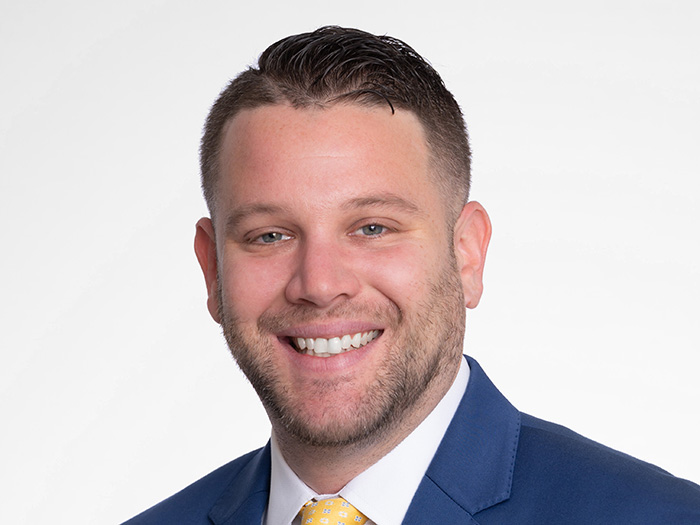An Industry that Gives: Learn the Truth About Commercial Insurance’s Charitable Side

At its heart, insurance is a system designed to help people in need. When the worst possible things have happened in history, people have come together to survive and help each other thrive. This very basic human value is entrenched in what insurance does every day — whether it’s responding to a catastrophe or providing coverage for more day-to-day exposures.
“The insurance industry designs products and services to assist people in a time of need, and philanthropy is a natural extension of this work,” said Bill Ross, CEO, Insurance Industry Charitable Foundation (IICF). “On an even larger scale, our industry provides the backbone for innovation, growth and creativity that drives growing and successful economies. When you’re confident that your risk is managed, greater creativity results and fuels innovation.”
“The U.S.’s insurers provide financial security and peace of mind to millions of Americans while also being one of the U.S. economy’s most significant employers, investors, and taxpayers. On top of everything else, insurers allocate more than half a billion dollars annually to charitable causes,” said Sean Kevelighan, CEO of the Insurance Information Institute.
During this pandemic, that included premium refunds to drivers who drove less, and food insecurity drives that netted millions for hungry children around the world. As of June, 2020, the Triple-I estimated that insurers donated $280 million to the fight against Covid. That number has surely grown in the interim.
Philanthropy as a Core Value
Most major carriers have established a charitable foundation to channel their efforts. In many companies, employees are encouraged to volunteer time and talent through paid volunteer days and matching donation programs.
“At Amwins, we raised more than $6 million and donated more than 71,000 volunteer hours for charitable causes through our 2021 Summer of Service program, an initiative encouraging staff from across the nation to give back through volunteering projects and fundraisers,” said Barbara Bufkin, a senior advisor with Amwins.
Bufkin, a former IICF International Board of Governors Chair, provided a thumbnail sketch of its philanthropic work: “With philanthropy as a north star guiding our industry, we have been able to make a real difference and improve lives through volunteerism, scholarships and charitable donations.”
Sometimes corporate charitable giving programs even align with risk management strategies, like using natural ecology to reduce the impact of floods.
Laura Crossin, senior vice president of human resources at Philadelphia Insurance Companies, said: “We’ve been partnering with the Arbor Day Foundation to plant 80,000 trees each year in forests and communities in need since 2015. Since the beginning of the partnership, we’ve been able to fund the planting of 480,000 trees.”
The IICF was established in 1994. By combining the efforts of various organizations into one large collective, the IICF has contributed $42 million in community grants and over 300,000 in volunteer hours to charitable causes.
With year-round volunteer opportunities and its annual Week of Giving, the IICF presents unique and valuable ways for insurance professionals to give back.
Ross said, “IICF provides a broad platform for the insurance industry to unite to make an even greater collective impact on societal issues and amplify our work in the community. We want everyone in the industry to become IICF supporters, making the greatest impact possible through the strength of so many companies and individuals contributing together.”
Philanthropy in a Pandemic
The pandemic changed everything in our world, including the way we volunteer and give back. Lockdowns and public health restrictions made it impractical to volunteer in person.
“In the early stages of the pandemic, nonprofit organizations were not hosting volunteers as they had in the past and many companies had a work-from-home policy. As a result, companies developed virtual volunteering activities,” said Melissa MacDonnell, president, Liberty Mutual Foundation.
“In fact, in an effort to further these efforts, the IICF compiled a list of resources to volunteer from afar.”
In addition to going virtual with volunteer opportunities, some organizations turned their lens to local communities during the pandemic.
“Along with a greater emphasis on virtual activities, we also worked to build awareness of the persistent issues in our communities, such as food insecurity and homelessness,” said Jim Shevlin, chair, IICF Atlanta Chapter and EVP and regional executive officer for Chubb’s Southeast Region.
Shevlin continued, “Part of this effort has been focused on directing the IICF giving initiatives toward nonprofit partners based in our local communities, where IICF grants make a significant and positive impact to them, and help these organizations serve a greater number of community members in need.”
While some parts of the world have returned to in-person events, charitable giving and volunteer opportunities may remain a hybrid mix of live and virtual opportunities. The local focus many organizations adopted during lockdown may continue as the benefits of helping communities where employees live and work are numerous.
Philanthropy’s Talent Angle
New college graduates and younger workers have more job options and opportunities than ever. And one thing they are looking for is meaningful experiences at work.
To be an employer of choice means providing more than a competitive salary and benefits package. Employers need to commit to advancing important social issues.
MacDonnell said, “We live in an environment where employees care deeply about a company’s commitment to social issues, with younger generations wanting more from their employers. According to the 2022 Edelman Trust Barometer, 60% of all employees choose a place to work based on their beliefs and 64% invest based on their beliefs and values.”
Philanthropy isn’t just good for our communities; it’s a good business investment.
Most companies have diversity, equity, and inclusion (DEI) goals and initiatives—and philanthropy is one way to support DEI goals. By supporting charities with time and money, companies show commitment to advancing DEI initiatives.
“So many of our industry’s philanthropic initiatives play an instrumental role in advancing DEI. The apprenticeship programs are just one example where companies are looking outside traditional sources for talent, introducing new individuals to a career in insurance and offering resources to develop the skills needed to advance,” said Ross.
Other ways to grow DEI initiatives through philanthropy include Lloyd’s global Dive In Festival, INROADS internships, and affiliation groups like NAAIA.
Giving back and helping others are core values of every insurance organization. Philanthropy is one way insurance takes these values to heart through donations of time, talent and treasure.
The insurance industry’s commitment to philanthropy is something to be proud of and it can only expand in years to come. &










